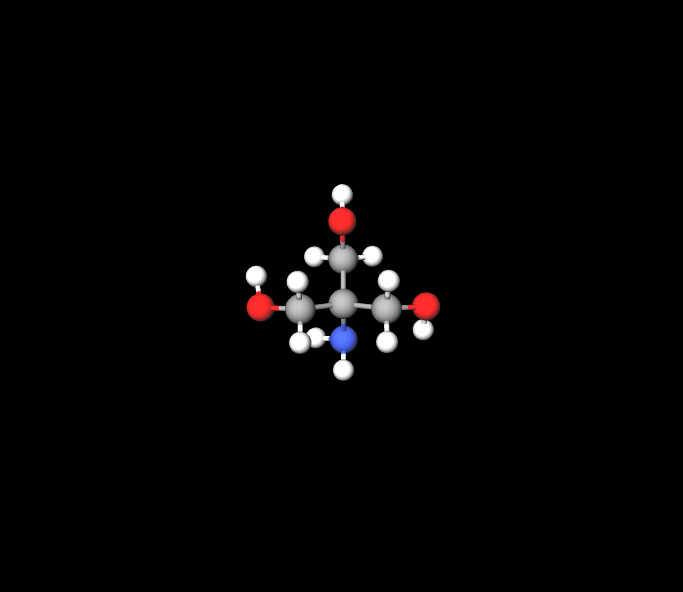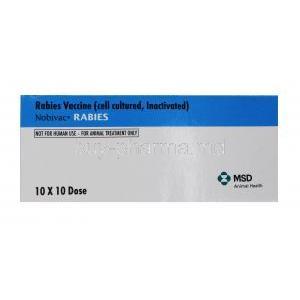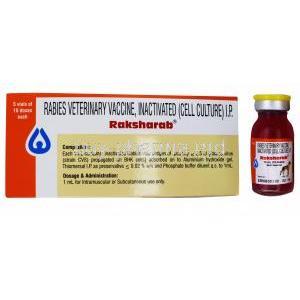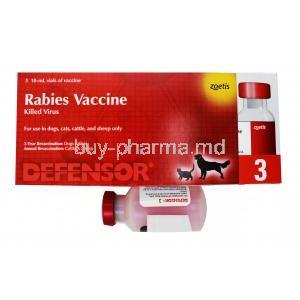Rabipur Injection
- Introduction to Rabipur Injection
- Composition of Rabipur Injection
- Uses of Rabipur Injection
- Off-Label Uses of Rabipur
- How Rabipur Injection Works
- Dosage and Administration of Rabipur
- Side Effects of Rabipur Injection
- Detailed Analysis of Interactions
- Storage and Handling of Rabipur
- Warnings and Contraindications
- Special Considerations in Administration
- Managing Overdosage of Rabipur
- Important Precautions with Rabipur
- Handling Precautions for Healthcare Providers
Introduction to Rabipur Injection
Overview of Rabipur Injection
Rabipur Injection is mainly used as a vaccine to prevent rabies. It is given to people who may come into contact with the rabies virus typically spread through bites, from animals.
Importance in Preventing Rabies
Rabies is an illness with a mortality rate close to 100% in individuals who have not been vaccinated once symptoms appear. Rabipur is essential for protecting against this virus, offering immunity that can stop rabies symptoms from developing following exposure.
Rabies immune globulin
Rabies immune globulin is administered alongside the rabies vaccine to prevent infection from the rabies virus. It functions by providing your body with the antibodies to defend against the rabies virus, offering a form of passive protection. This temporary shield remains effective until your body can generate its antibodies to fight off the rabies virus. Rabies immune globulin is given to individuals who have encountered an animal suspected or confirmed to carry rabies, such as through a bite, scratch, or lick. This process is known as exposure prophylaxis and is reserved for those who have not previously received the rabies vaccine.
Composition of Rabipur Injection
Active Ingredients
The main ingredient in Rabipur is the deactivated rabies virus, which guarantees both safety and effectiveness.

Pharmaceutical Formulation Details
Rabipur is designed as a freeze-dried product that, when mixed with a liquid, provides the inactive substances required to stimulate an immune reaction without inducing illness.
Uses of Rabipur Injection
Primary Uses: Rabies Prophylaxis
Situational Uses: Post-Exposure and Pre-Exposure Immunization
- After being exposed to the virus, Rabipur is given away to stop it from spreading to the central nervous system.
- In situations where there is a risk of exposure, like in certain jobs or when traveling to places, with a lot of rabies cases, Rabipur can help protect before any exposure occurs.
Off-Label Uses of Rabipur
Exploring Non-Standard Applications
Rabipur is made specifically for treating rabies. Scientists are exploring its possible uses in other preventive treatments for viruses.
Clinical Studies and Evidence Supporting Off-Label Use
Recent research indicates that there is potential for Rabipur to be beneficial, in situations but thorough testing is ongoing to confirm its effectiveness and safety.
How Rabipur Injection Works
Mechanism of Action Against Rabies Virus
Rabipur triggers the body's defense system to create antibodies that fight off the rabies virus, providing a shield of immunity that can effectively counteract the virus when encountered.
The Immune Response Initiation
The vaccine functions by introducing a deactivated virus, which triggers the immune system to respond and create memory cells without causing the illness.
Dosage and Administration of Rabipur
Recommended Dosage for Different Age Groups
The amount of Rabipur you take remains the same for all ages, with a dose of one mL given through an intramuscular injection.
Step-by-Step Administration Guide
The shot should be administered in the shoulder area of the arm or for children on the front side of the thigh.
Timing and Frequency of Doses
In exposure prevention you will receive four doses on days 0 3 7 and 14. For exposure prevention it is advised to take three doses on days 0 7 and either 21 or 28.
Signs of rabies in dogs
- Common indicators of rabies in dogs to be mindful of include fever, swallowing challenges, increased salivation, stumbling, seizures, and potential paralysis.
- As the infection advances your dog might exhibit signs of being overly sensitive to stimuli, with lights, motion and noise seeming to bother them.

Symptoms of rabies in cats
- Changes in behavior can manifest as a decrease, in appetite indications of anxiety or unease irritability and heightened excitability.
- The animal might start to prefer solitude, or an unfriendly animal could display friendliness.
- Unusual aggressiveness may arise; a calm and obedient animal could turn aggressive.
Side Effects of Rabipur Injection
Common Side Effects: Mild Reactions
Swelling, redness, and discomfort at the spot where the injection was given are typical. They are usually not severe and temporary.
Serious Side Effects: Rare Reactions
In some cases, people might have allergic reactions, like anaphylaxis, that need urgent medical care.
long-term side effects of rabies vaccine in humans
After receiving the rabies vaccine some individuals have experienced side effects such, as Guillain Barre syndrome, anaphylaxis, encephalitis (extremely rare) meningitis (very rare) and retrobulbar neuritis.
Detailed Analysis of Interactions
Drug Interactions: Pharmaceuticals and Rabipur
Rabipur, like any medication, could interact with other drugs, possibly changing how well they work or raising the chance of negative reactions. It's important to be cautious when giving it alongside medications as they might weaken the immune response triggered by the vaccine.
Interaction with Vaccines and Biologicals
The combined use of Rabipur with vaccines has been carefully examined. Specifically, live vaccines might affect the response triggered by Rabipur. It is commonly advised to give vaccines either two weeks before or two weeks after administering Rabipur to prevent any potential interactions.
why does rabies cause hydrophobia
Animals and humans infected with rabies could exhibit unpredictable or hostile actions, showing an increase in saliva production and foam at the mouth. Individuals showing signs of rabies may also suffer from painful muscle spasms, in the throat particularly when attempting to swallow water.
Storage and Handling of Rabipur
Optimal Storage Conditions
It's important to keep Rabipur in a fridge between 2 and 8 degrees Celsius. To ensure its strength and effectiveness, shield the vaccine from light and freezing.
Shelf Life and Expiry Information
The Rabipur usually lasts for 3 years from the manufacturing date if kept in the right conditions. Make sure to check the expiration date, on the packaging before using it to make sure it's still good.
Warnings and Contraindications
Specific Health Conditions and Risks
If someone is allergic to any part of the Rabipur vaccine, like neomycin, a leftover residue, from making it, they should steer clear of using it. Also those facing fevers or acute infections should hold off on getting vaccinated.

Who Should Not Receive Rabipur?
Expectant mothers should carefully weigh the advantages and drawbacks as the safety of Rabipur during pregnancy remains uncertain. Moreover, those with weakened systems might not develop optimal immunity through vaccination.
rabies shot for dogs
Puppies need to reach an age of about 12 to 16 weeks to get their initial rabies shot. This initial shot is known as the primary dose, and the follow-up vaccination is administered within a year of the one.
rabies vaccine for cats
Rabies poses a threat to cats as it is invariably lethal, and unfortunately, there is no cure once contracted. The best approach is prevention. A single dose should be administered one year after completing the series followed by subsequent doses every three years.
Special Considerations in Administration
Administering to Elderly Patients
Older individuals might show an immune reaction to vaccines. It's important to evaluate their health condition and any existing medical issues before giving them the Rabipur vaccine.
Guidelines for Pregnant Women and Nursing Mothers
During pregnancy, it is advisable to use Rabipur is essential, as there have been no direct associations with fetal harm. Additionally nursing mothers should exercise caution since it is uncertain whether the vaccine elements are passed into breast milk.
Safety and Efficacy in Children
Rabipur has been proven safe and effective for children with a dosage that remains consistent across all age groups. This makes it a reliable choice for treating individuals who are, at risk of rabies exposure.
Managing Overdosage of Rabipur
Signs and Symptoms of Overdose
In cases taking too much Rabipur could cause increased swelling or serious allergic reactions, around the injection area.
Immediate Actions and Treatment
In case of an overdose, it is advisable to provide treatment for the symptoms. Healthcare providers should focus on monitoring signs and checking for anaphylactic reactions, as top priorities.
Important Precautions with Rabipur
Before Receiving Rabipur: What to Know
Patients should share their background with their healthcare provider particularly mentioning any past negative reactions to vaccines. It's important to inform healthcare professionals about allergies or immune system issues, for a vaccination process.
Monitoring and Safety Measures Post-Administration
Patients who have taken Rabipur should be monitored for any side effects. It is important to inform a healthcare provider of any unusual symptoms to ensure timely intervention.
Handling Precautions for Healthcare Providers
Safe Handling Practices
Healthcare professionals are required to follow vaccination procedures, such as using clean equipment, wearing gloves, and correctly disposing of needles and syringes to avoid contamination between patients.
Disposal and Safety Protocols
Dispose of used vials, syringes and other disposable items following the guidelines for biomedical waste. This practice is essential, for reducing harm and preventing needle stick injuries among healthcare workers.
how much is a rabies shot US
The price of a rabies vaccine typically falls between $40 and $75 per dose. Some affordable vaccination clinics or animal shelters may provide it at a discounted rate, especially if it is bundled with necessary pet vaccinations. Remember, your dog will require rounds of shots along with boosters.






